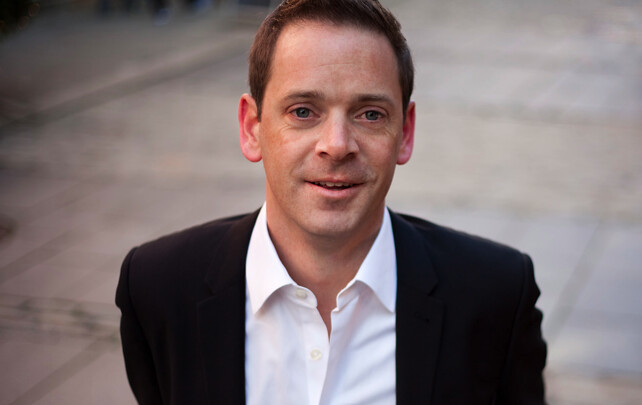 Congratulations to Kyle Westaway, who won the SOCAP10 Impact Challenge. He received his $1195 pass to all three days of SOCAP10. Here’s the submission that addressed how to unlock the $120 billion dollar market opportunity in individual impact investment. The top 5 are being featured on Triple Pundit.
Congratulations to Kyle Westaway, who won the SOCAP10 Impact Challenge. He received his $1195 pass to all three days of SOCAP10. Here’s the submission that addressed how to unlock the $120 billion dollar market opportunity in individual impact investment. The top 5 are being featured on Triple Pundit.


“I am a New York-based social entrepreneur, attorney and blogger. I believe in the power of the market to affect social change. I serve as the Director of Operations and Business Development for Biographe – a sustainable style brand that employs, empowers and restores survivors of the commercial sex trade in Southeast Asia. I also founded Westaway Law – an innovative boutique law firm that serves activists, entrepreneurs and artists who have a dream to create something that will shape culture. I blog about the legal side of the social enterprise movement at www.socentlaw.com.” (Bio from blog.goodness500.org)
Here’s the winning post.
2 SIMPLE KEYS TO UNLOCK $120 BILLION
By Kyle Westaway
A combination of innovative legal and financial structures must be engaged In order to tap into the $120 billion market of individual impact investors.
Legal Structure:
The Low Profit Limited Liability Company or L3C, is a new type of LLC designed to attract private investments and philanthropic capital in ventures designed to provide a social benefit. An L3C may offer two tranches of capital. The first tranche could be offered to foundations (greater risk). The second to tranche offered to socially conscious individual investors (lowered risk). This new hybrid legal structure could incentivize investment in social enterprise by allowing socially-minded institutional money to absorb the biggest risks, thereby offering a low risk high return opportunity to the individual investor.
Financial Structure:
The L3C structure creates interesting opportunity for funding, but the question remains, who are these socially-minded institutional investors that are willing to assume a potion of high risk and low financial return?
The answer: scale up The Social Innovation Fund (SIF) and match it with Philanthropic money. Currently the SIF is $50 million. My proposal is to increase it to $500 million total. $250 million granted by the Office of Social Innovation and the other $250 million is donated from private individuals as a part of the Billionaire Pledge.
Public grants and traditional philanthropy’s aim is to create the highest social impact, with no expectation for financial return. In contrast, investing in social enterprise (rather than merely donating) achieves social impact with a potential financial return to SIF. That return will be used to make new investments in future social enterprises, thereby exponentially increasing the social impact of the original investment.
The SIF could select and invest in social enterprises by taking a high risk tranche of equity in the selected social enterprise (if structured as an L3C as outlined above). Then the enterprises can raise the additional capital requirements from individual investors, where consumer investors can take a lower risk position, with a higher rate of return. Thus, SIF serves three functions: 1) taking the least desirable tranche of capital, 2) sweetening the deal for individual impact investors, 3) vetting potential impact investment opportunities for the individual impact investor.
Furthermore, the SIF should also follow the Presumed Abundance model of model of funding it forward. When the venture has a liquidation event (goes public, or is bought out, etc.) the SIF and the successful social entrepreneur together choose how to reinvest the SIF’s share of the profits into new enterprises under the same terms as the original agreement. So, the social entrepreneur that received the original investment, now gets to be a part of the decision-making team to choose the social enterprise that will be funded with her profits, and thus the next generation of social enterprise is funded.
Thus, by scaling up and tweaking the SIF and using the multiple tranche mechanism in the L3C, the $120 billion of individual impact investment will start to flow into social enterprises that will change the world for generations to come.

